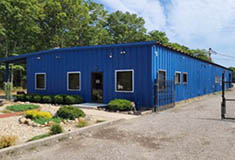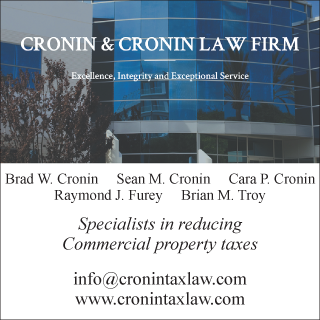Hunt Corp. Commercial Real Estate Q&A: Sale-Leasebacks - by David Hunt

Q: What would be the advantage of selling our manufacturing plant and leasing it back, as opposed to just refinancing the building?
A: There are several advantages to selling your property to a third party and simultaneously executing a long-term net lease to occupy the building. As you are probably aware, a sale-leaseback is a mechanism that allows you to access the equity that has been locked into your bricks and mortar. Each situation needs to be evaluated on its own merits, but for many companies that presently own their real estate the sale-leaseback is an attractive alternative for several reasons.
First, unlike refinancing where some part of the value of the property must be retained as equity, a sale-leaseback allows the seller to extract 100% of the property’s worth. This can be a substantial figure, since most lenders will not exceed loans of more than 75% of the property value. For example, if the fair market value of your plant is worth $2 million, a sale-leaseback will allow you to extract the full amount, less fees. Traditional financing would only allow 75% or less of this amount.
Another advantage to a sale-leaseback is the positive effect it usually has on the company’s balance sheet. Typically, your building has been depreciated on the books, but the market value has appreciated. As an example, if you purchased the building for
$1 million, the depreciated asset value on the books may be $600,000 while the market value of the property may be $2 million. By entering into a long-term operating lease, the cash and asset side of your firm’s balance sheet are often vastly improved, which in turn improves the most commonly used financial ratios, notably current ratio and debt-to-equity ratio. And if your building is presently mortgaged, a sale-leaseback will also remove the mortgage debt from the balance sheet.
In addition, for tax purposes, a sale-leaseback allows full deduction of rent paid under an operating lease. If you refinance the property, only the interest portion of the mortgage payment can be deducted, not the principal payment.
The sale-leaseback mechanism has been around for many years, and has been employed by many Fortune 500 companies to divest themselves of corporate real estate and improve their balance sheets. Today’s fast-changing business climate makes it difficult for companies to forecast their long-term need for space. That is one reason that the trend today, for both large and small companies, is to lease real estate. The sale-leaseback is a popular alternative to achieve that goal and generate cash at the same time.
Do you have a question regarding commercial real estate? Email your question to Commercial Real Estate Q & A, at [email protected] for possible inclusion in a future column.
David Hunt, MCR, CCIM, SIOR is the president of Hunt Corporate Services, Inc., Plainview, N.Y.
Suffolk County IDA supports expansion of A&Z Pharmaceuticals


The evolving relationship of environmental consultants and the lending community - by Chuck Merritt
When Environmental Site Assessments (ESA) were first part of commercial real estate risk management, it was the lenders driving this requirement. When a borrower wanted a loan on a property, banks would utilize a list of “Approved Consultants” to order the report on both refinances and purchases.







.gif)
.jpg)